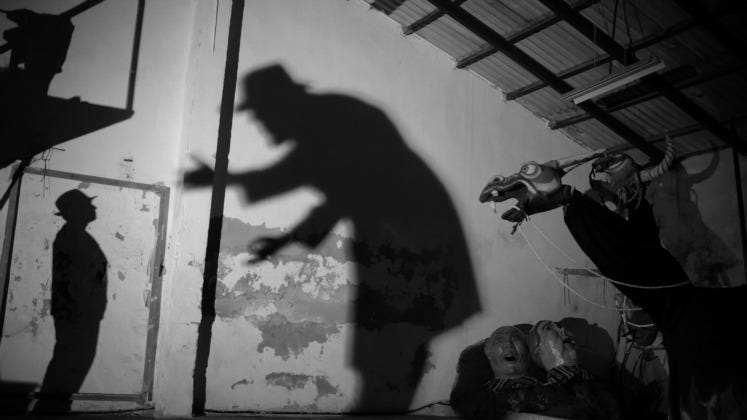The K Effect. Stalin's editor

For Indy Film Fest showtimes, click here.
Cerebral and ambitious, "The K Effect. Stalin's editor" attempts nothing less than to rewrite the language of film or, at least, reinterpret it.
In this fanciful "Forrest Gump"-like tale, an unlikely figure plays a pivotal role in history by being present at a number of critical events and junctures. Instead of late-20th century America, our backdrop is the rise of the Soviet empire and the evolution of cinema as a serious art form — developments director and co-writer Valentí Figueres sees as divergent twins.
Maxime Stransky, ostensibly the author of the film we're watching, is an impressionable young actor and filmmaker whose (non-romantic) soul mate is none other than Sergei Eisenstein, a legendary real-life director and editor whose development of cross-cutting montage is central to how we watch movies today.
Over time they grow apart, aesthetically and politically. Sergei is a true believer in the motivations behind the 1917 revolution and grows disquieted with the rise of the authoritarian regime of Joseph Stalin. Maxime is recruited by the young communist state's spy network to become an undercover agent, eventually morphing into the personal pet of Stalin himself.
While Sergei believes in using film as a medium to bring about social change, Maxime holds onto it as the purest way to capture reality — what they call the Cinema-Finger vs. the Cinema-Eye. Ironically, it is Maxime who ends up having the more significant effect on the tectonic plates of history while Sergei grows marginalized as an artist.
All this may sound highfalutin enough, but here's the kicker: Only a small part of the visuals, perhaps 20 percent, is made up of footage shot for this movie. The rest is comprised of stock footage, historical newsreels, etc. So this is a fictional creation made up largely from tiny slices of reality.
A narrator (Jordi Boixaderas, who sounds like he's doing voiceover for an imported beer commercial) takes on the (Spanish-language) auditory role of Maxime, describing his life and actions to the audience as we look at footage of war, oppression, etc. interspersed with (mostly) black-and-white home movies taken by Maxime, who films large portions of his everyday existence.
There is no dialogue per se; the proceedings play out much like a silent movie, with a variety of music and sound effects underneath. Indeed, composer Luis Prado intentionally wrote much of his score to resemble sounds of the early 20th century, including a tinny piano ditty that's repeated ... generously (to use a generous description).
The life of Maxime (Jordi Collado) the actor-spy takes all sorts of unbelievable turns. He floods millions in counterfeit currency into the American economy, supposedly sparking the stock market crash of '29. He hobnobs with Hollywood royalty, taking on the alias of producer Max Oppuls. Under Stalin's orders, he goes so far as to marry a niece of Errol Flynn and sire a daughter. Meanwhile, his own Russian wife (Valenti Pinot) and child languish at home, abandoned for years at a time.
His further adventures take him through the Spanish Civil War, giving out advance warning on the German invasion of Russia, the development of atomic weapons and other remarkable and improbable turns.
"The K Effect. Stalin's editor" works more as an idea than as a movie. It's like something experimental created for its own sake — an attempt to make a film out of other films. Even as I was amazed at the achievement in editing and cinematography, there aren't any real characters with whom to engage. Emotionally, it's a black hole. The experience of watching it is remote, like peering at a painting through binoculars.
Technically, this film is a marvel. Aesthetically, it reaches for the stars. Individually, it gave me a raging migraine and I struggled even to get through it.
3 Yaps



